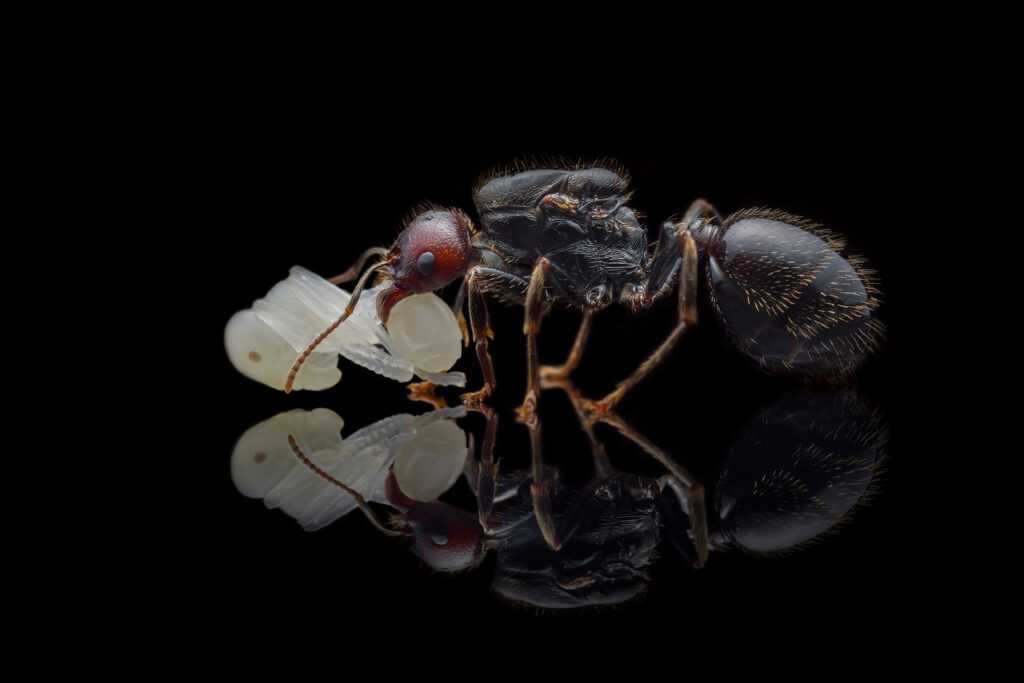Camponotus misturus – The Fascinating Ant Colony
Welcome to our world of Camponotus misturus, a remarkable ant species that will captivate you with its unique characteristics and impressive colony size. In this comprehensive description, we will explore the various aspects of Camponotus misturus, from its size and color to its nutritional needs and preferred nest types for breeding.
Colony Type and Size
Camponotus misturus is a monogynous species, meaning that each colony consists of a single queen. These colonies can reach a staggering size of up to 5,000 workers, showcasing the incredible sociability and cooperative nature of these ants. The number of workers allows them to divide labor efficiently and accomplish impressive tasks to ensure the well-being and growth of the colony.
Size and Color
Let’s delve into the dimensions of Camponotus misturus. The queen ant is the largest member of the colony, measuring between 14 and 16mm in length. The workers, on the other hand, range from 4 to 8mm in size, while the majors, known for their specialized roles, can reach a length of 9 to 12mm. Camponotus misturus is recognizable by its black head and body, with a slightly red abdomen, creating a striking contrast that sets it apart from other ant species.
Nutritional Needs
When it comes to feeding Camponotus misturus, a diverse diet is crucial for their health and development. These ants primarily consume food insects such as cockroaches and crickets, which provide essential protein. Additionally, they can also benefit from syrup made with water and honey in a ratio of 4:1/3:1/2:1. Fresh fruits, vegetables, jelly, and cooked chicken without salt offer additional sources of nutrients and are excellent options to ensure a balanced diet for your ant colony.
Humidity and Temperature Requirements
Creating the ideal environment for Camponotus misturus is vital for their well-being and overall success. Maintaining the right humidity and temperature levels is key to their thriving colony. In the arena area, the humidity should range from 40 to 60%, providing a balanced and comfortable microclimate for the ants. In the nest area, a slightly higher humidity level of 60 to 70% is recommended to mimic their natural habitat.
Temperature plays a crucial role in the daily lives of Camponotus misturus. The arena area should be kept at a temperature of 24-30 °C to provide an optimal environment for the ants to forage and engage in various activities. The nest area, on the other hand, should have a slightly lower temperature range of 22-24 °C to simulate their underground nests, ensuring the ants feel safe and secure in their designated space.
Characteristics of the Species
The distinct coloration of Camponotus misturus makes it a truly breathtaking species to observe. Resembling a slightly smaller specimen of the formidable Dinomyrmex gigas, these ants exhibit not only an impressive appearance but also intriguing behaviors that make them a fascinating addition to any ant enthusiast’s collection.
Recommended Nest Types for Breeding
Creating an ideal and comfortable environment is essential for the successful breeding and growth of Camponotus misturus colonies. Several nest types have proven to be suitable for these ants, providing the necessary conditions for their development. Acrylic, cork, plaster, and aerated concrete nests are among the recommended choices for housing Camponotus misturus. These materials offer a combination of durability, moisture retention, and optimal space allocation, ensuring the ants can establish their colony and thrive within their new habitat.
As you embark on your journey with Camponotus misturus, ensure you provide the best care, balanced nutrition, and appropriate housing to witness the incredible growth and social dynamics of these extraordinary ants. Watch as they establish their colonies, work together harmoniously, and create a miniature world that will leave you in awe.



![InShot_20220620_1339 Alt text: Camponotus misturus product - [Keyword] Note: Since you haven't provided a specific keyword, please replace [Keyword] with the relevant keyword.](https://antontop.com/wp-content/uploads/2024/01/inshot_20220620_1339.jpg)













Reviews
There are no reviews yet.